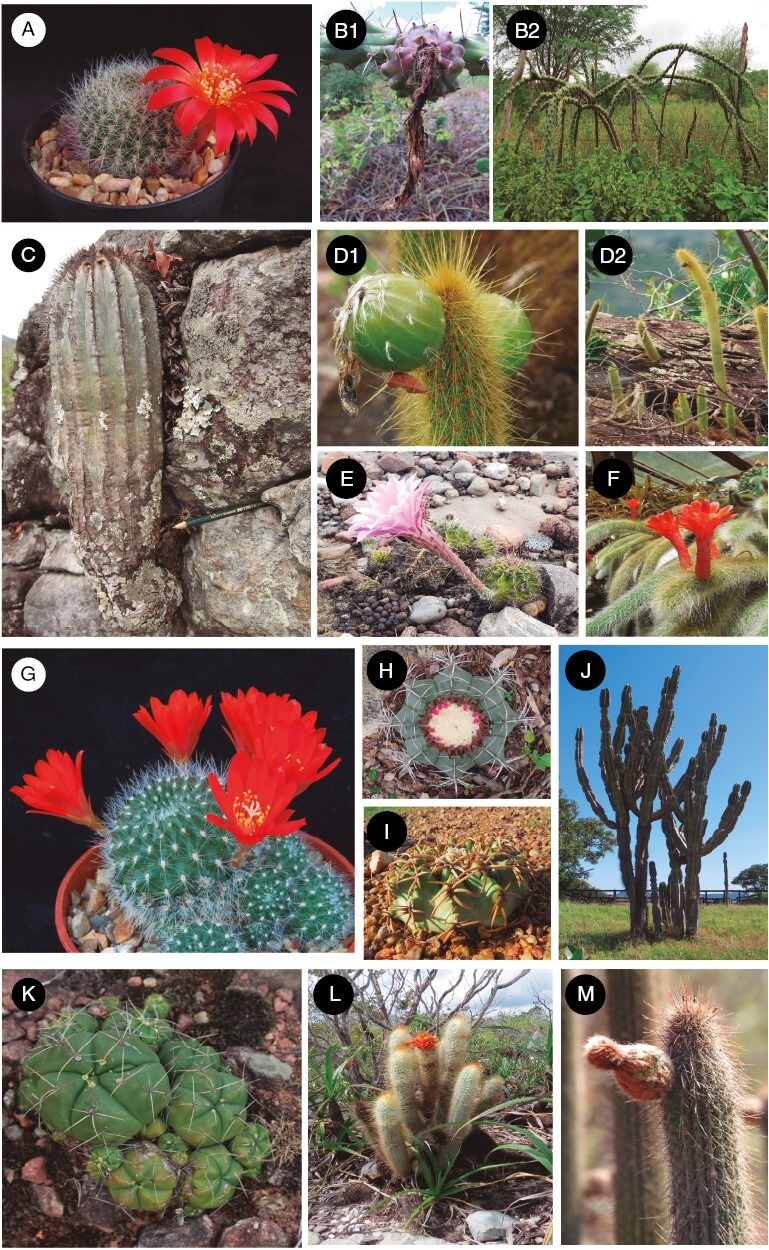Fig. 1.

Representatives of subtribe Rebutiinae (A, C, G, K), Trichocereinae (B1, B2, D1, D2, E, F) and Cereinae (H, I, J, L, M), sensuNyffeler and Eggli (2010), showing different growth forms. (A) Rebutia minuscula K.Schum, (B1 and B2) Harrisia adscendens (Gürke) Britton & Rose, (C) Uebelmannia pectinifera Buining, (D1 and D2) Arthrocereus rondonianus Backeb. & Voll, (E) Echinopsis sp., (F) Cleistocactus winteri D.R.Hunt, (G) Aylostera fiebrigii (Gürke) Backeb., (H) Melocactus glaucescens Buining & Brederoo, (I) Discocactus bahiensis Britton & Rose, (J) Cereus jamacaru DC., (K) Gymnocalycium denudatum (Link & Otto) Pfeiff. ex Mittler, (L) Micranthocereus auriazureus Buining & Brederoo and (M) Facheiroa squamosa (Gürke) P.J.Braun & Esteves. Photo credits: A and G: M. Lowry; B, D, H, I, L and M: M. C. Telhe; C: E. M. Moraes; E and K: M. Kohler; F and J: M. Romeiro-Brito.
